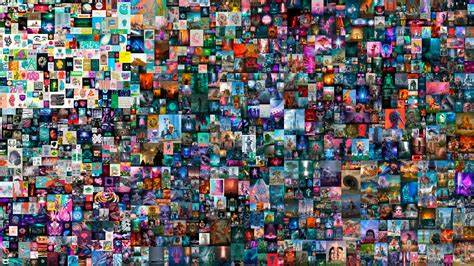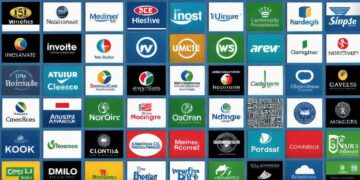It seems that we recently played computer games, buying houses, horses, armor, and warriors in virtual space. Years have passed, and now yesterday’s players are buying much more expensive things in virtual reality: NFT art is becoming more and more popular. Works by digital artists are already selling for millions of dollars at Christie’s and Sotheby’s.
The NFT boom, when collectors bought up everything, has slowed. Everyone who bought into the excitement recognized their purchases were unlikely to be sold soon. If an unknown artist could set out his work for an absurdly high price and there was a possibility it would be acquired, that probability is dwindling. Collectors wait to buy nft an artist’s work until they see his potential and growth. However, the traditional art market and collectors are becoming interested in NFTs. Art galleries and museums are starting to take notice. There are NFT platforms curated by conventional artists who view the blockchain as the future of art and wish to help create new art systems.
The NFT market encompasses art, collecting cards, gaming characters, tickets, celebrities, etc. The world’s quick ascent of NFT in March-April of this year, then drop, and by October, transitioned to the second wave, but more relevant and intelligible to both artists and collectors.
Celebrities and influencers are producing limited edition NFT collections of works after the iconic sale of Beeple at the same Sotheby’s. In the West, Snoop Dogg, Edward Snowden. Blockchain-based charities, hockey, and basketball clubs releasing collector cards and assisting youngsters are examples of NFT platforms popping up.
The sale of Beeple’s piece drew the art community’s attention, and artists from all over the world decided to break into the NFT area with their works. The plethora of jobs in multiple markets caused a little turmoil.
Crypto millionaires or art connoisseurs?
For starters, you need to establish a wallet, acquire ether, and deal with platforms and cybersecurity. Above all, ask yourself, “how can a photograph cost so much on the Internet?” And if the crypto community hasn’t addressed those concerns, neither has the collector. So the explanation is obvious: crypt dwellers gather NFTs since this is their habitat, tools, and art.
Because crypto-collectors and crypto-artists are fundamentally different from traditional collectors and artists, we are seeing the emergence of “new stars” in the NFT community and a new art market. We observe how many successful artists strive to stay up with current trends but have yet to strike a bitcoin collector-friendly vein.
In what ways has new technology been used in art this year? What artists and projects do you like?
I suggest Olafur Eliasson’s cosmic metamodernist installations. “Half of his creations are generated by the spectator,” the artist claims. “Yours” is a play on words that means both “yours” and “yours.” Immersion in Eliasson’s art is a collective and personal experience. Aside from new technology, Eliasson employs VR in one of his current projects.
Many believe NFT is an uploaded gif or animation. Sadly, this is not the case. As an art historian, I constantly advise artists and collectors to consider the artist’s concept and the work’s aesthetic aspect. Moreover, NFT allows artists to play not only with method and vision but also with the technological execution of thinking, ranging from the capacity to decide a worker’s life span, it’s aging to self-destruction.
Do you think everyone working with NFT art knows what blockchain is?
With Photoshop, Metamask, and a little of ether, anyone can create art on OpenSea. In each firm, there are experts and those who merely utilize the system, not interested in how it works. But with NFT, practically everyone must learn what blockchain is, at the very least. Then there’s the query from your grandmother: “What is this NTF of yours?”
Whether NFT or not, a curator must pick high-quality, contemporary art in the realm of art. “Virtual curator” sounds like “AI curator,” implying an AI curator is a beautiful concept. However, the NFT market as a crypto art is automated, and collectors purchase NFTs for their purposes.
Digital art is being projected and hologrammed on screens. Virtual and augmented reality are also gaining popularity. The ease of digital art is that it may be displayed anywhere on any acceptable medium using any device.
Of course, NFT’s new universe needs expert curation. More art means more curators.
The rise of value in digital art and artist self-awareness among formerly client-focused CG artists is critical in our field. The epidemic touched us all. In art, we can see more creativity, daring, independence, and young authors eager to create, try new things and find their style. This transforms the language of ideas and art in general. We might claim that a new genre has emerged with enormous creative possibilities.
What is art’s future?
Art is where a person is. And we’re going digital. Simultaneously, virtual reality blurs the line between the real and the imaginary. We may transcend physical limits and create new locations. Art will follow us, learning new tools. Technology has brought us worldwide change, and change always provides art with new possibilities.
First, art will transcend frame perception, allowing the observer to enter the artist’s world and become a part of it. Second, art will become interactive and generative, like nature and the surrounding environment. Modern technology facilitates this shift and blurs the boundaries between spectator and artwork.









